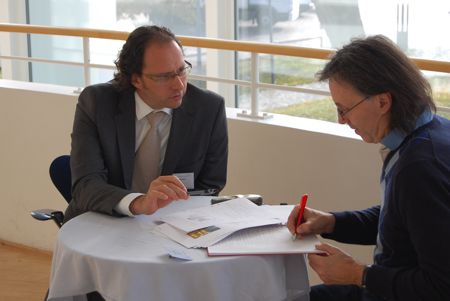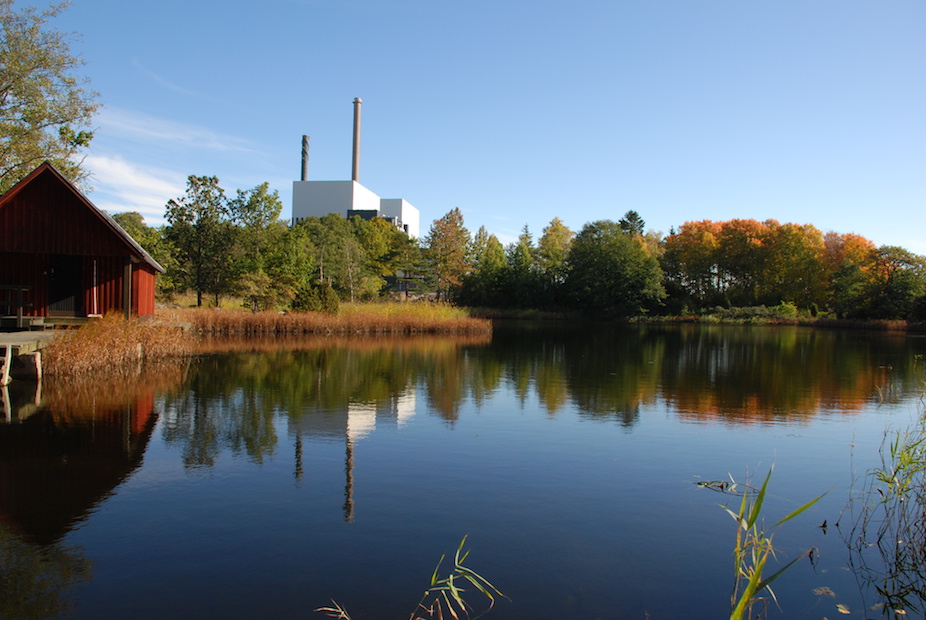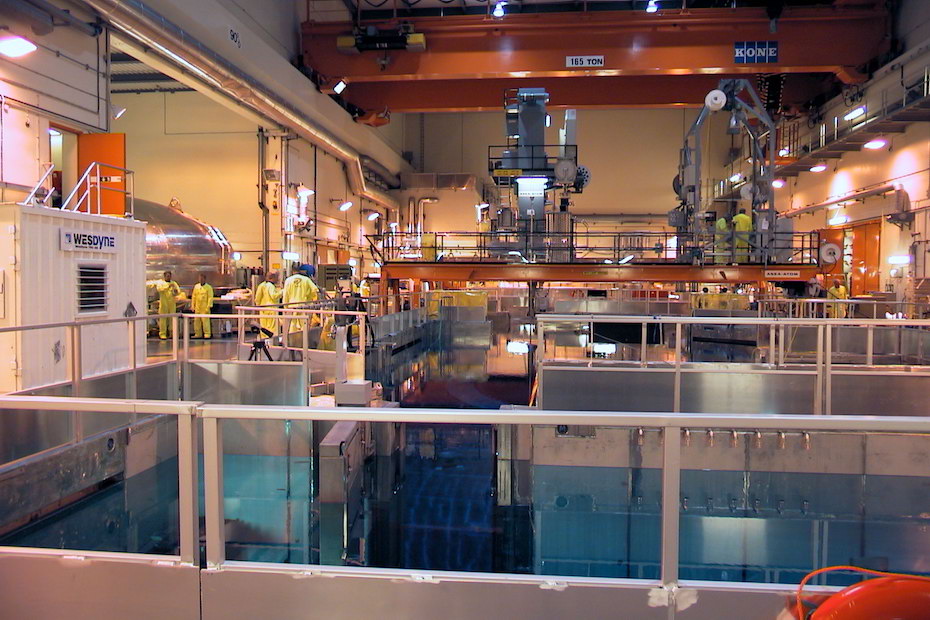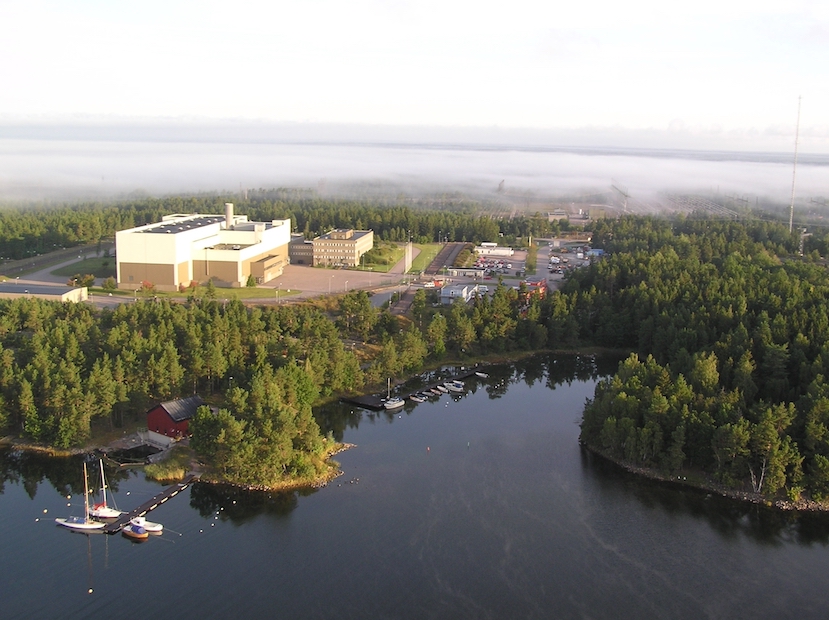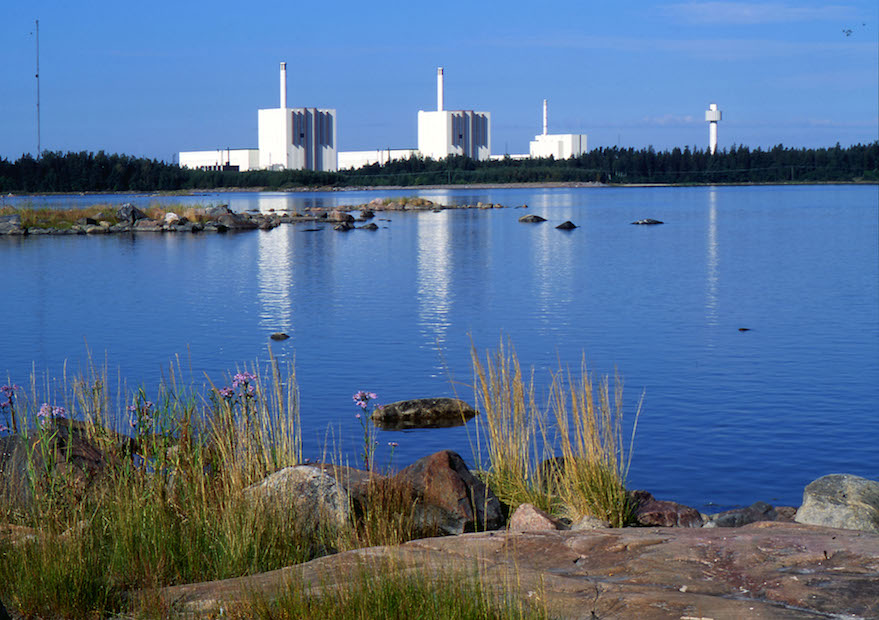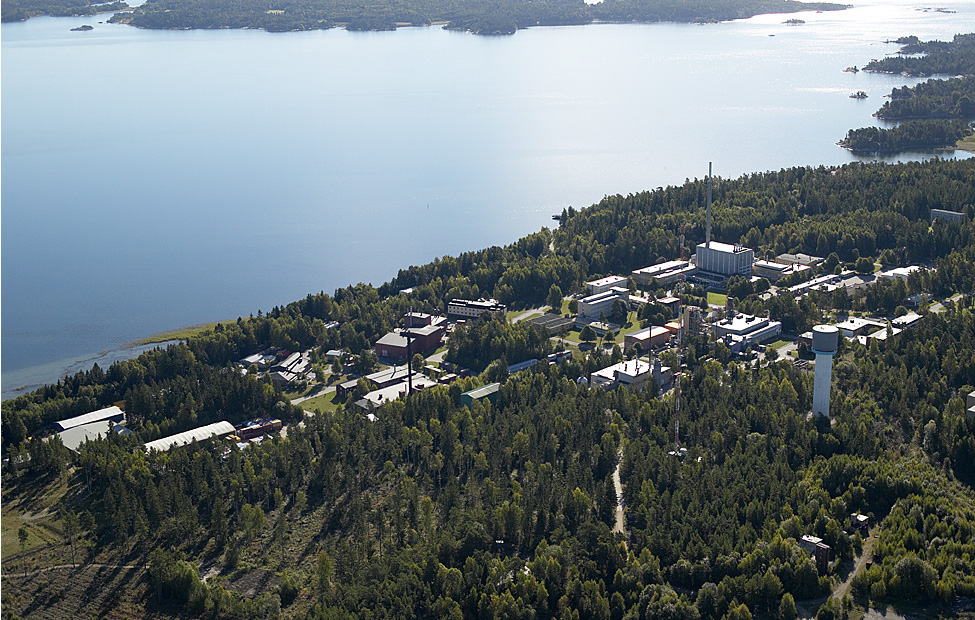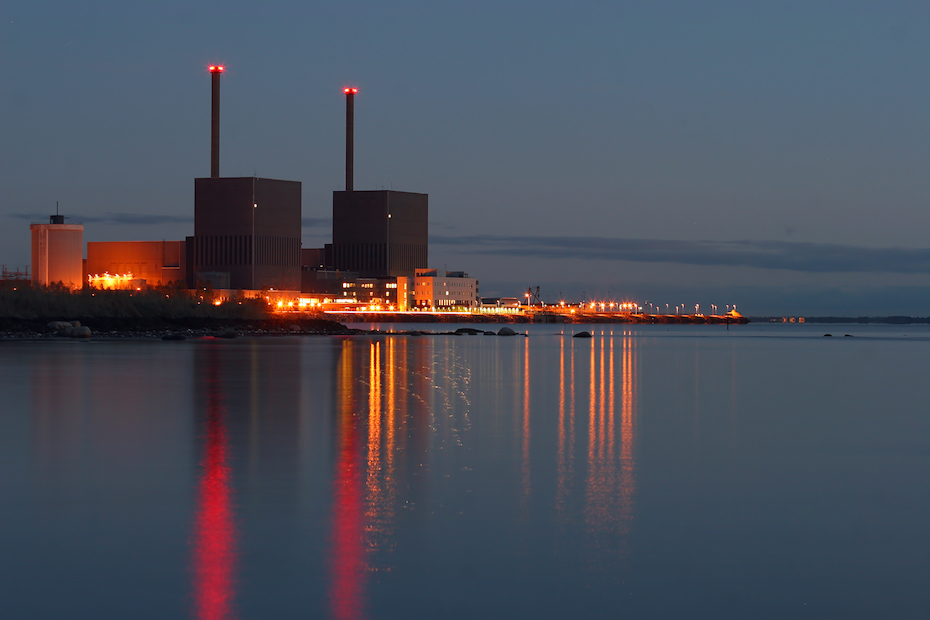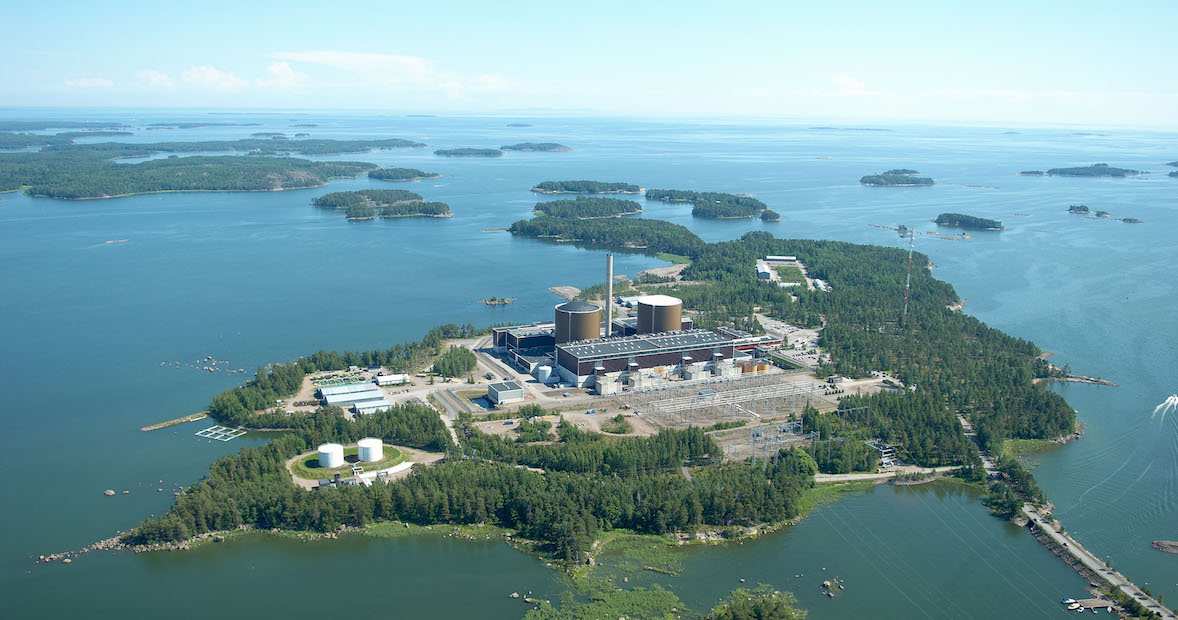KIKA Nuclear Cranes Seminar 2010 in Växjö
– Summary
Summary and Brief of Presentations
Success never comes alone …
The first Nuclear Cranes Seminar, arranged by KIKA in 2008, was a positive experience with 60 participants from Europe and North America.
Now 87 lifting and handling specialists from nuclear power plants and responsible authorities plus a number of suppliers from three
continents gathered in the stylish Christina Nilsson Hall in Swedish Växjö, not to listen to the famous songbird, but to meet
colleagues and to learn more about how to increase safety and reliability in nuclear installations.
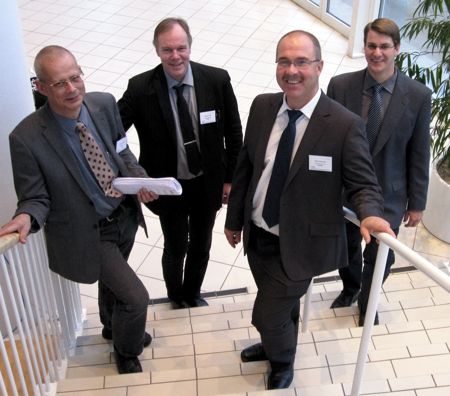
Day 1:
The duo Kjell Andersson and Thomas Krüger, two of the forces behind the KIKA NCS Seminar 2010,
entered the scene exactly on time to start the seminar. KIKA is a member network for users of cranes and other
lifting and material handling equipment in the Nordic countries Sweden and Finland. Since the foundation in
1999 KIKA has played an active part in both national and international connections.
The association has been very active in fields like competence development, implementation of standards and exchange of
experience in order to promote safety and availability.
Peter Ohlsson, Chairman of KIKA, briefly reminded the audience about the previous seminar in 2008 and the goals of
the association. The KIKA committee members Thomas Hagman of Vattenfall Ringhals AB and Johan Dagnäs of Eon
OKG AB should also be honoured for their work during the preparations of the 2010 seminar.
WANO, World Association of Nuclear Operators was formed in 1989 to enhance international cooperation between the
operators after the Chernobyl accident in 1986. JeanMarc Willemenot from the Paris office of WANO had four themes
on his agenda: Why SOER (Significant Operating Experience Reports)? Analysis of events 2007-2010,
Improvement initiatives in Nuclear Power Plants and Recommendations from WANO.
- It is important to encourage members to report all kind of events promptly
- WANO wants to alert the members to take actions in order to prevent such events, using the experience of other operators.
- SOERs are written to address significant events or trends, including corrective actions for WANO members. (Example: “Rigging, Lifting and Material Handling)
- During Peer Reviews an independent team makes a review to compare the operational performance of a unit to the best international practice. The SOER recommendations are assessed in connection with the review.
- Examples of problems: Weak policies and procedures, insufficient training (key factor), poor interface connection between departments and plants or contractors, weaknesses in inspection and maintenance, inappropriate work practices, inefficient management or supervisory.
- WANO suggests changes in working practices, e g better planning or preparing of lifting operations, better risk assessment (example pink book by British Energy), centralized lifting and handling teams.
- WANO clearly sees the advantages of guidelines to have similar rules in all countries, which will benefit contractors operating in several countries.
- Other tasks: Create an international expert group to provide proposals, maintain a database for check of equipment, categorization of lifting tasks, more training and repeated training, issuing an individual passport/licence for users (KIKA has a similar system in the Nordic countries), specific training for supervisors, improved equipment reliability and availability (right equipment at right place and time)
“We should fight against the thoughts of ‘impossible accidents’!”
EDF is a French based global energy supplier. Gilles Navarro, manager of material
handling and lifting at EDF CINP (Centre d’Ingénerie du Parc Nucléaire) in Marseille, told the participants about projects
regarding crane modernization.
- In the early 80’s several accidents occurred on cranes in fossil and nuclear plants in France
- As a consequence EDF created a workgroup including constructors of cranes and components, approved inspection companies and representatives of EDF. The objective was to evaluate the safety level of every crane and to define necessary upgrades, in the end to define general requirements for design, construction and installation of cranes in NPPs
- The result was “Books of Technical Specifications” (BTS) and “Book of Technical Rules” (BTR) for lifting.
- Classification of nuclear cranes due to operational risks: High Safety, level 1, example polar cranes, High Safety, level 2 for safety, example refuelling machines, High Safety, level 2 for economic reasons, example gantry cranes.
- EDF has more than 500 cranes or material handling devices to manage, aiming to reduce the number of different types to 50 by standardization.
- Focus on ageing and obsolescence due to intended extension of plant lifetime, e g changing relay controls to digital, reduction of outages, regarding seismic safety factors etc.
- BTS and BTR are based on French and European standards (will be updated according to e.g. EN 13001) and they overrule for example FEM rules for calculation of lifting equipment. (See separate interview!)
- EDF has a number of examples of modifications on heavy lifting cranes, where vital details (beams, reeving system) were replaced in order to reduce the probability of load release. For example clutches and external gearings are prohibited as well as transmission by universal joints, chains, belts or couplers.
“We should have a holistic approach, combine different individual sources of failure to maximise safety”
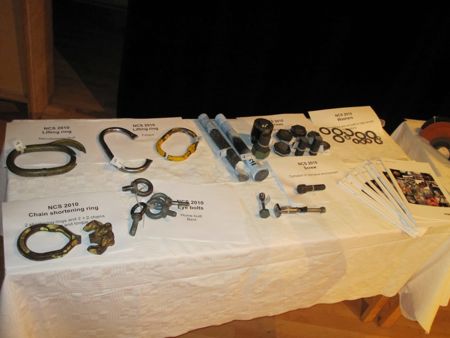
Konecranes, the Finnish manufacturer of industrial cranes and lifting equipment, sent Steven Waisanen, Head of Business Unit Nuclear, to Växjö. Konecranes delivered its first nuclear crane in 1963. Steven’s main message was “Reduce risk by modernization!”
- The classical factors for successful risk reduction are: Proven products, professional project management, experienced engineering team, right installation tools and adequate training
- Example of proven products: Adjustable Frequency Drives (AFD), over 100 000 installed, Single Failure Proof (SFP) Cask Cranes, 20 upgrades in 36 months.
- Focus on lessons learned and continuous improvement
- Qualification of products in safety related applications; FME, SAR, FMEA
“It is important to qualify the product to local codes and standards”
PaR Nuclear Ederer Cranes is a division of the US Group Westinghouse.
Jim Nelson is the company’s Crane Business Development Manager and he gave the audience a detailed description of
upgrading of cranes in nuclear plants.
- Cranes are upgraded for several reasons: To meet standards for high-integrity lifts (Single Failure Proof upgrade), to improve reliability (replace obsolete controls and electrical system), increase of capacity and performance.
- The US NRC expects heavy load cranes to be SFP unless there is a safe load path or an acceptable load drop analysis.
- Most original polar cranes in the US are not SFP.
- In 2008 the NRC accepted SFP equivalency for the sole purpose of handling reactor heads.
- Applicable standards: NUREG-0554, Single-Failure-Proof Cranes for NPPs , NUREG-0612, Control of heavy loads in NPPs plus a number of appendixes, generic letters and bulletins
- Main challenges: Size and weight limitations, seismic qualification, installation access, qualification of the existing bridge
“NRC guidelines do not address the public and programmatic consequences of a dropped load; those are left to the nuclear power industry itself.”
Eiffel is a familiar name all over the world thanks to the genius of Gustave
Eiffel and his unique tower, built 1889 in Paris. The company still exists as a part of the
Eiffage Group with 71 000 employees all over the world. Hervé Pasquiet and Khaled Sabbagh came
from France to tell the NCS delegates about modernization of lifting and handling equipment in nuclear power plants.
- Demand for life expectation exceeding 60 years for new plants
- Reliability and availability through optimising.
- Many different standards to obey for the suppliers of lifting and handling equipment: EU Machinery Directive 98, Machinery Directive 2006, Conformity Declaration, FEM, NUREG, KTA, British Standard, EN 13001. In addition customer expectations and rules, as an example BTS (CST) and BTR (CRT) by EDF.
- Use of EPR, Elasto-cinetic calculation, reliability failure diagrams, structure analysis
“One trend dominates; the safety level is always increased for every generation of cranes.”
NKM Noell Special Cranes is a German nuclear crane manufacturer, which is a part of the French REEL Group. In Växjö Stefan Popp and Uwe Fischlein described a crane modernisation at the Swiss nuclear power plant KKB Beznau.
Beznau consists of two PWR reactors delivered by Westinghouse in 1969 and 1971
- Old electric control system from 1981, no spare parts available, difficult maintenance
- High temperature and high radiation level in the containment
- Cranes do not comply with actual standards
- Modification to extend life span by 20 years
- Decision to replace crane trolley and safety system according to German KTA standards, SFP rope drive, additional brake at the high speed shaft, safety brake at the rope drum, FEM applied to interface between trolley and crane bridge.
- Crane power supply via conductor rails, operation via radio remote control.
- German TÜV third party inspection body
- Acceptance test including load test of trolley at NKM Noell plant due to restricted space in the containment.
- Installation period 18 days
“There are no mandatory rules or regulatory scheme in Switzerland, only an obligation to get approval from the authorities. We have applied KTA voluntarily”
Day 2
After an evening with German dance music from ages gone by and a massive liquid balancing after eight hours of more or less dry theory, the participants of KIKA NCS 2010 woke up to an earthquake theme.
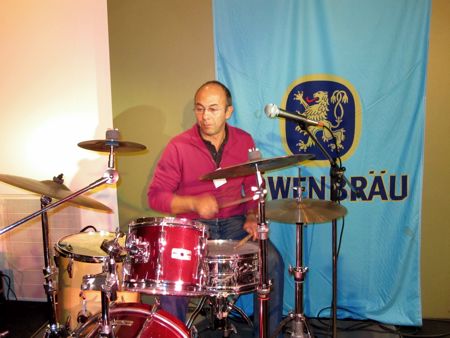
JNES is short for Japan Nuclear Energy Safety Organisation, established in 2003. Masakatsu Inagaki is Senior Researcher at the Seismic Safety Division, part of the Seismic Test and Research Group. (See separate interview!). He has investigated the effects of seismic activities on nuclear lifting and handling equipment in form of a seismic capacity test of an overhead crane under horizontal and vertical excitation. The reason for the test is a damaged driving shaft coupling in a Japanese reactor in July 2007.
- The Seismic Safety Division addresses the improvement of seismic safety of nuclear installations through cross-check analysis of seismic adequacy and structural integrity.
- Japan is leading in seismic risk evaluation, support for preparing safety standards and development of seismic safety analysis codes and earthquake resistance tests.
- A BWR overhead crane was selected at the text object in scale 2/5 to fit the shaking table. To compensate for the downscaling new masses were added to the test model.
- Total weight of the model 110 tons, girder length 18 m.
- The purpose of the testing was to check the function of new derailing prevention lugs
- Two input waveforms were used, a standardized wave and a wave similar to the recorded wave from the 2007 earthquake
- The test confirmed that the trolley and girder wheels jump, when the vertical local response of trolley and girder exceeds the gravity, even if the vertical input motion is less than 1,0 G.
- There is considerable sliding on the rails, but the prevention lugs worked as planned. Damage was however found on wheels and the rails. Also mounting bolts were affected.
- In Japan there is a seismic classification of importance for BWR and PWR equipment. The classification concerns auxiliary equipment (electrical installations and instrumentation necessary to close the isolation valve), the direct supporting structure of the reactor vessel, indirect supporting structure (internal concrete in the reactor building) and other equipment, such as the containment polar crane. The seismic classes are S and Ss. Turbines and generators are exempted from S class and classified in class B and C.
“In Japan we have seismic events every day and they are reported on TV like the weather forecasts.”
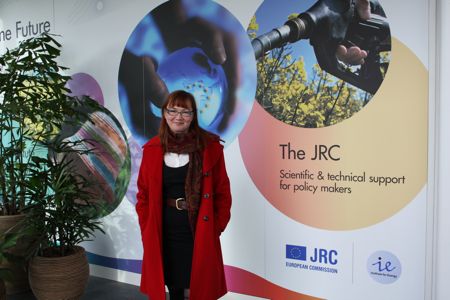
Ulla Vuorio represented two different employers at the KIKA NCS 2010 seminar. She has been working with crane regulatory rules at STUK (The Finnish Radiation and Nuclear Safety Authority) but at present she is living in the Netherlands, working at the EC Joint Research Centre Institute for Energy in Petten. (See separate interview!) Her theme, “Probabilistic Safety Analysis for Nuclear Cranes” is hot stuff among the owner, operators and suppliers of lifting and hoisting equipment. The theoretical basis for evaluating the risks and the technical life span of cranes is depending on many factors; the crane is a complex unit consisting of mechanical structures, runways and rails, instrumentations and sensors, electrical wiring and devices and other hydraulic and pneumatic systems.
- There is a potential threat in nuclear hoisting and transfer operations if they are not properly designed, manufactured, maintained and inspected and operated.
- The risk for the plant can be split into four classes ranging from an event causing no damage of safety system and no initiating event (IE) to the worst case when you have both an IE and damage of the safety system.
- In addition there is risk of direct injuries to the personnel, physical and through radiation
- Economic losses can be caused by drops of heavy loads
- A study made at the Fortum Loviisa PWR plant in Finland indicated that the risk level was at its peak when lifting the reactor cover and dismantling it, and almost at the same level when replacing the fuel.
- The risk study should contain evaluation of all the steps, from designing to operational procedures.
- In Finland STUK issues detailed regulations (YVL guides), which the licensee shall comply with.
- The applicant shall submit a probabilistic safety analysis (PSA) to STUK.
- Deterministic and probabilistic approaches interact and work in parallel.
- Living PSA is to run through the design, construction and operation stages.
- The living PSA shall contain information about internal initiators (including drop of heavy loads), fire, weather conditions and seismic events and an estimation of the releases if the accident causes such.
- The licensed personnel at the plant should know the PSA models well and be able to update it during operation.
- Quality assurance, qualitative and quantitative uncertainty and sensitivity analyses required.
- Peer review is NOT required in Finland as part of the licensee’s PSA process.
- PSA must be applied while drawing up Risk information programs.
- All modifications must be evaluated by STUK.
“Identification of risks and weaknesses in design should be made in an early stage. Evaluate also all near misses to find the real reasons, design, manufacturing or operational mistakes!”
Jack Wray was the Grand Old Man at KIKA NCS 2010. He is running an independent consultancy company after a long career as a hoisting and material handling specialist for British ports. Today Jack is chairman of the ISO/TC96 Committee (Cranes) and CEN/TC 147 (Cranes-Safety). He admitted not to be a nuclear crane specialist, but as an ‘outsider’ he brought in fresh views.
There is a number of principal standards making bodies, on an international level ISO, IEC (International Electrotechnical Commission), ITU, CEN, FEM. In addition there are national standards bodies, e g. AFNOR; ANSI, DIN, BSI.
CEN is based in Brussels and the members are National Standards Bodies of the member countries of EU. CEN shall provide harmonized standards that support European Directives.
If a manufacturer follows a harmonized European standard he benefits from a “presumption of conformity” to the directive.
- An ISO or IEC standard is prepared in many steps, starting from a committee consisting of experts from the member countries and its sub-committees. Proposals are circulated to members for approval. The TC prepares a draft called ‘DIS’, circulated to member bodies for voting and comments. Committee amends and re-circulates for final voting. ISO standard is published.
- An EN standard is prepared by the CEN committee consisting of experts from EU countries. Proposals circulate to member for approval. Committee makes a draft ‘prEN’ to EU national bodies for voting and comments. The national bodies vote and comment the final draft and the EN standard is published.
- An international standard facilitates global trade and improves safety and it assists in the implementation of regulations.
- New standards are CEN EN 13001 series for lifting equipment (near completion), ISO for monitoring of crane design life including fatigue aspects.
- Even the best standard will not prevent misuse, e g if a crane is designed for 2 000 operations and it is used 24 hours per day, 7 days per week, which will cause accidents due to wear. Operational misuse, for example opening the locks of a container crane before it reaches the ground to save seconds – if it hits something on the way the container is lost!
“Do we really need more detailed standards for nuclear cranes, offshore use or ATEX environment? The question is open.”
Bel V is the Belgian Technical Safety Organisation cooperating closely with the Safety Authority FANC as parts of the regulatory body, while Tractebel Engineering is a licensee partner, belonging to the GDF Suez Group. Sébastien De Grève of Bel V described the process of Safety Assessment of Nuclear Cranes, while Xavier Feyt focused on Safety Review of Nuclear Cranes. (See a separate interview with Sébastien on the post seminar of regulations!)
SDG:
Belgium has 7 PWR nuclear power plants, owned and operated by Electrabel GDF Suez
The rules are based on American USNRC with some deviations, both relaxations and amendments.
Periodic safety reviews (10 years), evaluation of the conformity of nuclear cranes with current standards.
Deisgn rules, NBN 159 (Belgian), Branch technical Position ASB 9-1, for overhead handling systems for nuclear power plants and regulatory guide 1.104, overhead crane handling systems.
There are two current assessments, one for light loads and the other for heavy loads. A heavy load is defined as handled for example by the polar crane. The risks are divided into risk of radioactive release and classical risks.
The assessment of load handling systems was not considered as a priority matter until recently. Electrical control components are becoming outdated. Ageing, fatigue and wear problems occur.
Bel V asks for improvement of documentation and procedures in accordance with practice.
SFP cranes not in conformity with the design basis. Some heavy load cranes are not, and will never become SFP cranes in the sense of NUREG-0554.
On-going discussion in Belgium regarding software and seismic qualification
“There are significant deviations between documentation and practice, maybe due to lack of clear and complete rules.”
XF:
In Belgium a list and comparison has been made of all standard regulations applied for nuclear cranes. NUREG-0554 and appendix C of NUREG-612 chosen as reference standard.
If deviation identified between construction standard used and the reference standard, action should be proposed to meet the requirements of the reference standard applied.
Some examples of actions taken: Emergency stop for crane in case of earthquake, located at ground level. Dual design for gearbox if it is located between safety brake and drum. Braking capacity should not be able to cause extra damage. Motor torque to be limited to the minimum required to hoist the load.
Structural integrity recommended for seismic qualification, specific requirements for software controlled protections.
Unclear which the stopping distance should be according to standards, loaded/unloaded, with one/two brakes?
Design safety factor: 2 or 3 times the load for redundant parts.
“Overall documentation needs to be improved with clear regulatory references”
Inspecta Sweden is a part of the international inspection, testing and certification group Inspecta. Reine Bladh is Senior Industrial Surveyor at the Växjö office. He gave a stunned audience some proofs of the findings he and his colleagues have made when they checked electrical designs. But, first a review of EN ISO 13894-1, Safety-related parts of control systems, with special emphasis on which performance level should be demanded on nuclear cranes.
The performance level is a discrete level of control systems to perform a safety function.
There are five performance levels, from a to e. They shall be determined by estimation of MTTFd (Mean Time To Dangerous Failure), five categories (B,1,2,3,4) and diagnostic coverage.
Other factors to consider are the behaviour of the safety function under fault condition(s), any systematic failure, the software and the ability to perform a safety function under the expected environmental conditions.
For example, category B means that a fault can lead to the loss of the safety function, while category 4 means that when a single fault occurs, the safety function is always performed. Detection of accumulated faults reduces the probability of the loss of the safety function (high diagnostic coverage).
Diagnostic coverage is a measure of the effectiveness of diagnostics = failure rate of detected DF/failure rate of total DF. (DF = Detected Dangerous Failures)
Low MTTFd is estimated for a time period of 3-10 years, medium to 10-30 years and high from 30 to 100 years. Due to interaction between the factors the final PL value can be considerably lower than the value of single factors.
Safety related parts of control systems shall fulfil the following requirements for PL: standard service cranes/class 3, PL c, cranes class 2 (reactor cranes), category 3, PL d and cranes class 1, PL e. Special consideration shall be taken to wireless and PLC controlled cranes.
The new German KTA 3902 proposal demands PL class e for reactor and fuel cranes, class d for overhead cranes and for other handling cranes class d.
“In cases where the human or economic consequences of failure are exceptionally severe (e g. nuclear cranes) increased reliability is obtained by applying a specified risk coefficient.”
Peter Ohlsson is the Chairman of KIKA. He is also responsible for all lifting equipment at SKB
(The Swedish Nuclear Fuel and Waste Management Co). Peter ended the presentations by telling the international participants
about the handling processes of fuel waste in Sweden.
- 10 reactors in operation, 2 shut down.
- Waste transported by ship, M/S Sigyn
- New canister factory, encapsulation plant and deep final repository
- KBS 3 Concept = spent fuel inserted into a copper canister with vast-iron insert. Will be stored in the Swedish bedrock, surrounded by bentonite clay.
- Canisters manufactured by friction stir welding in a welding cell.
- SFP crane critical point at encapsulation plant, where a lost canister can cause production stoppage. Low risk for release of radiation.
- The application for the plant was made according to older Swedish crane standards. SFP will be used if necessary, a special analysis document describes the overall handling process of the fuel canisters.
“The trial operation of the complete process will start in 2025 and regular operations in 2027.”
